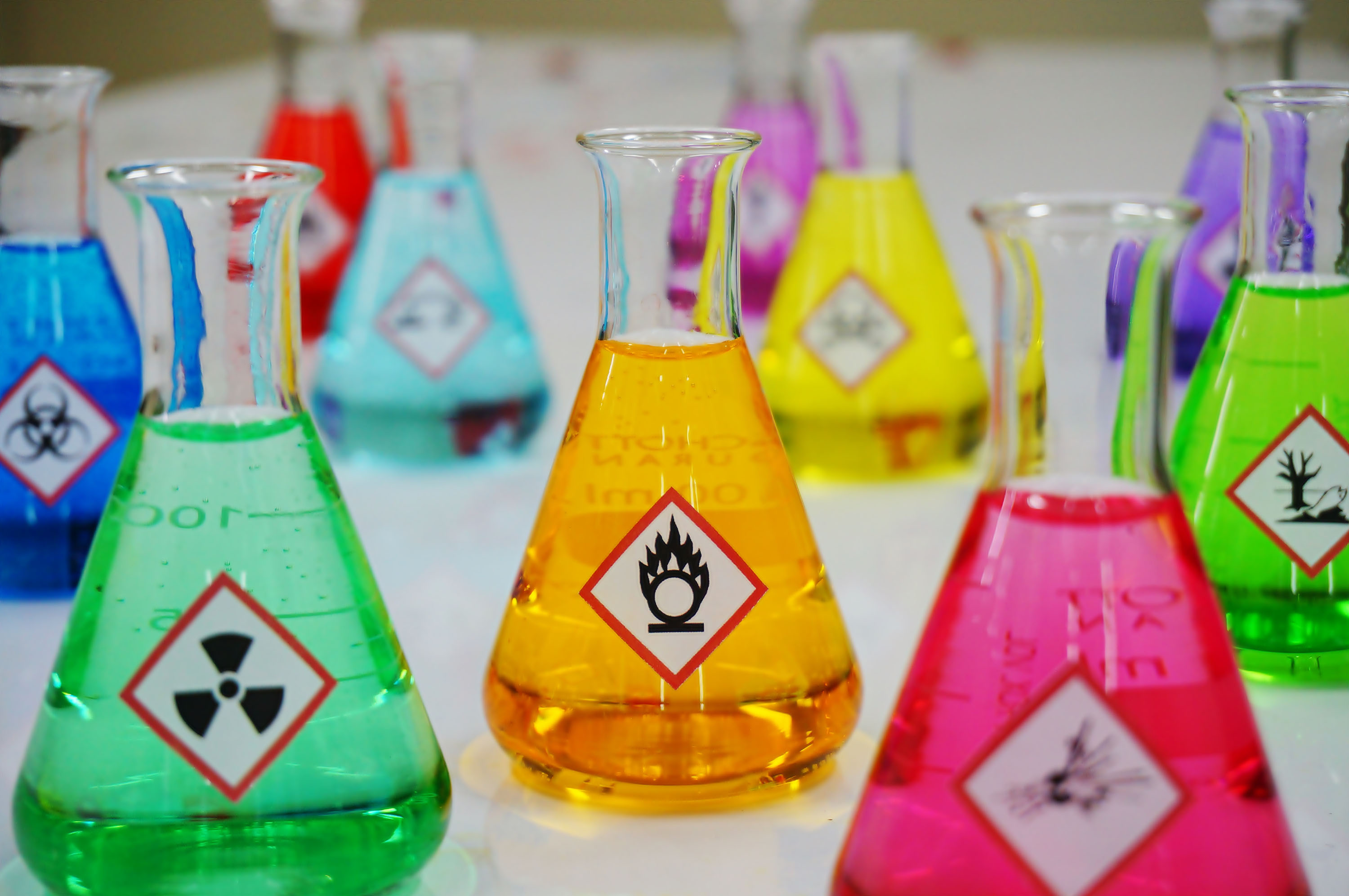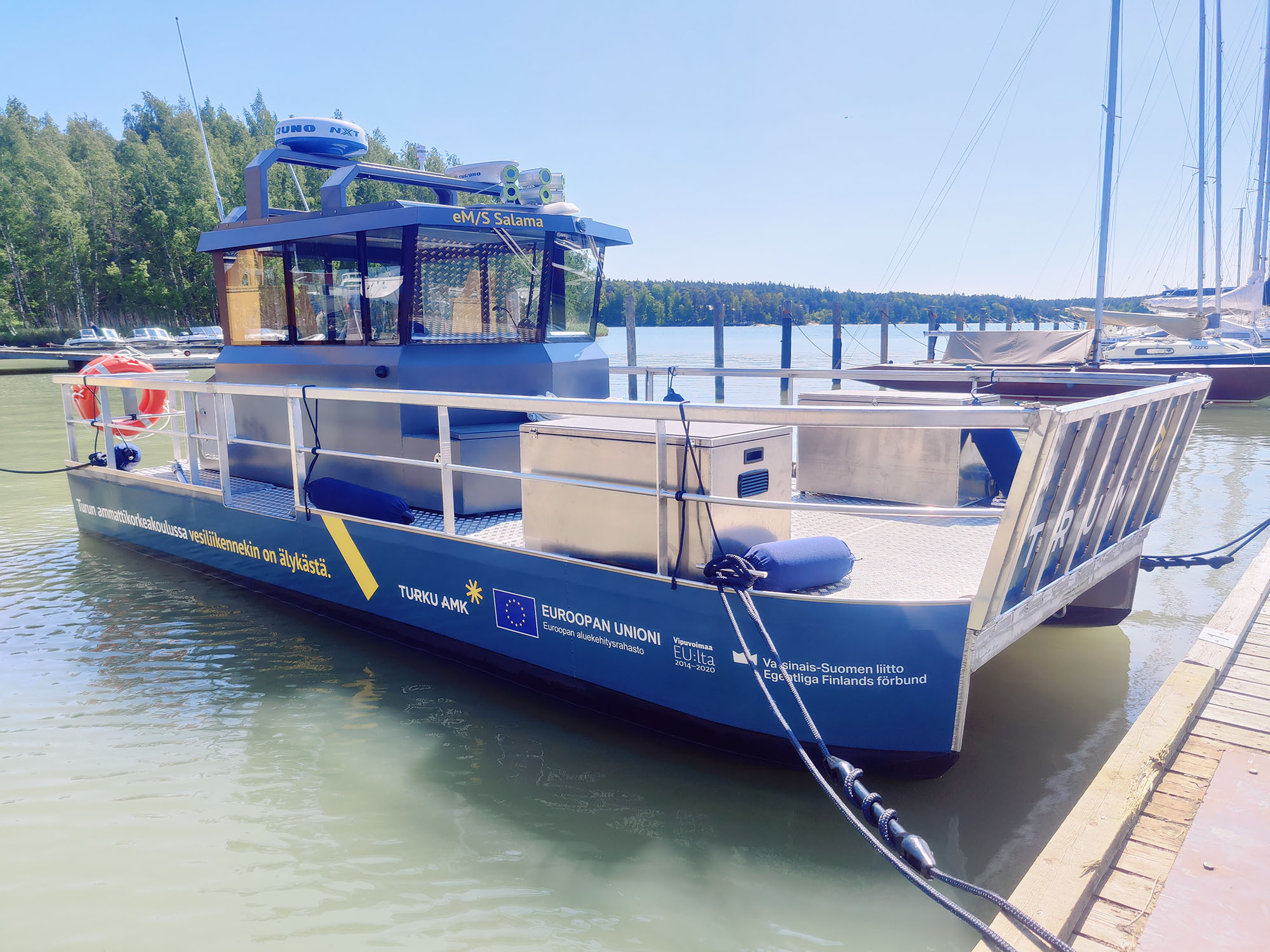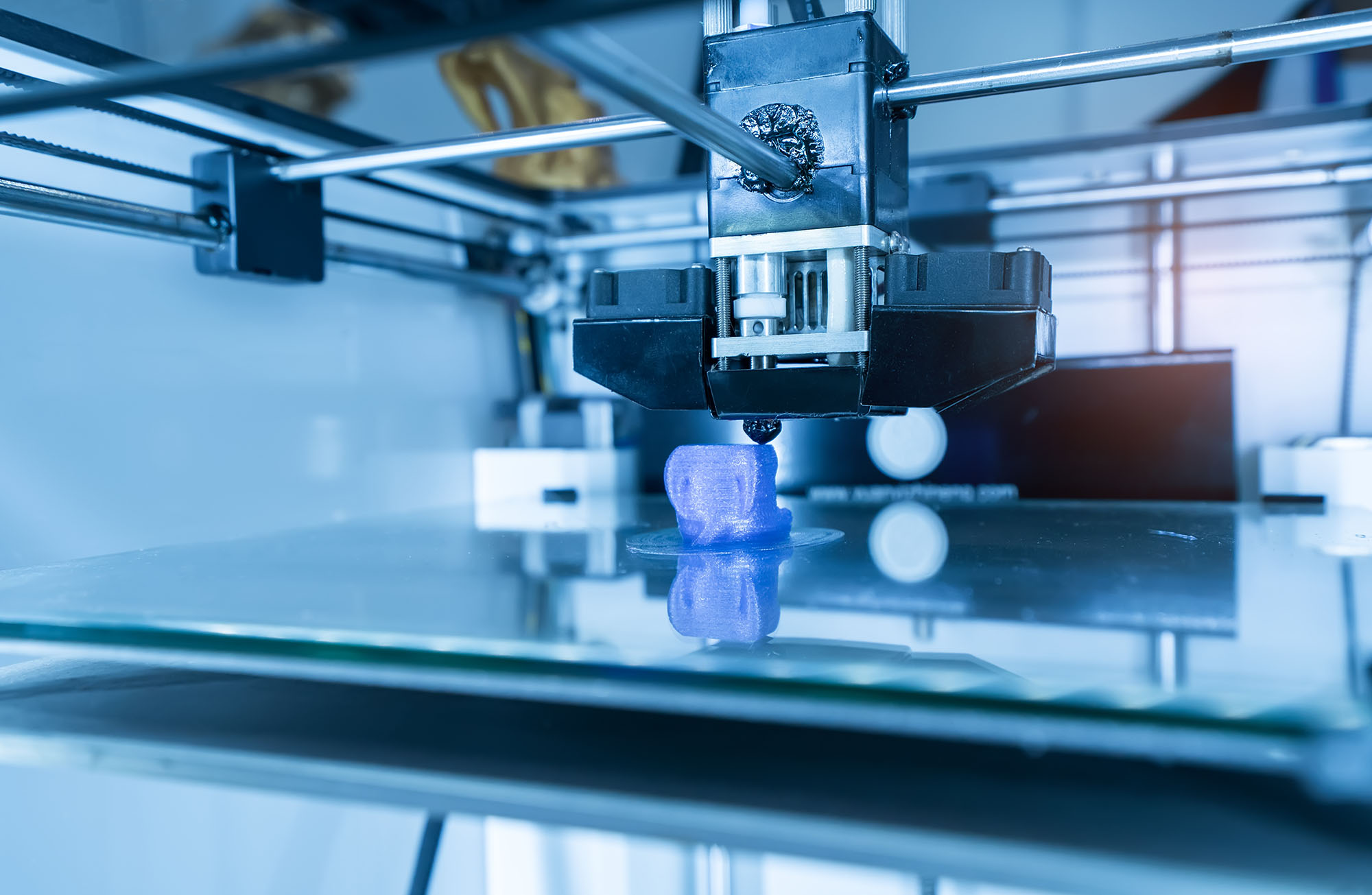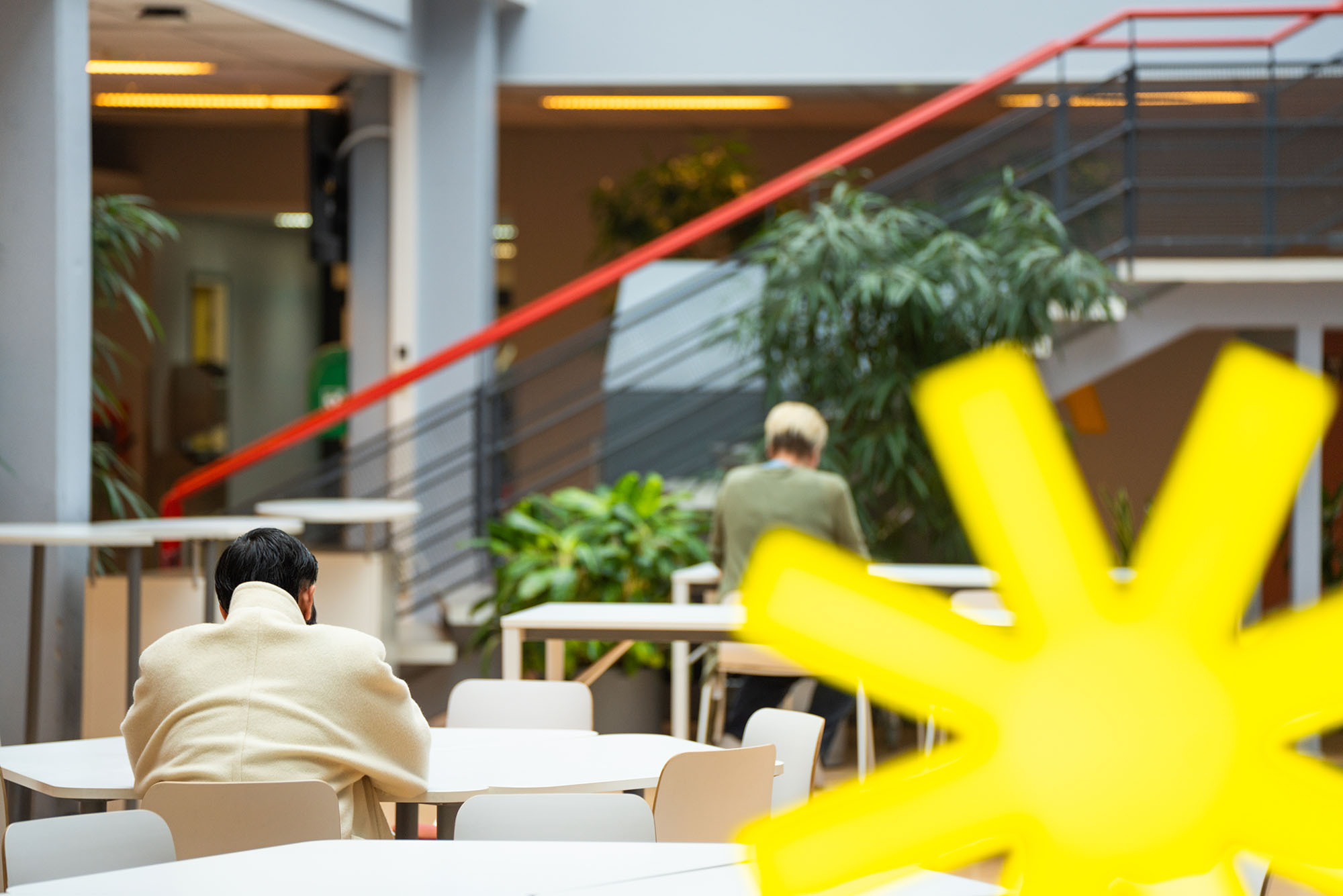Turku University of Applied Sciences helps public organisations to become aware of the problems of chemical exposure.

Published:
Edited:
Text: by Siiri Welling
Chemicals are all around us. They can be naturally occurring or synthetic, man-made. Natural chemicals can also be produced synthetically. Many of the chemicals in our environment are essential and safe for life, but others are harmful to our health and the environment. Consumers and organisations can influence the chemical load through their purchasing behaviour.
The public sector in Finland spends as much as €45 billion on procurement every year. At EU level, around €1.8 trillion is spent on procurement each year. The public sector needs information on chemicals, especially when it comes to procuring products or services. The international ChemClimCircle project, coordinated by the City of Stockholm, aims to increase municipalities’ procurement knowledge on harmful substances.
“The project looks at procurement from three different perspectives: the harmful chemicals they contain and the circular economy and climate change. For example, in furniture procurement, we try to find a balance between the two: we try to find furniture that is safe in terms of its chemical load, that has a long lifespan or that can be recycled later in terms of materials. In this way, we reduce the amount of waste going to landfill and reduce the chemical load on the environment and human exposure, in line with the principles of the circular economy,” explains project manager and lecturer Hannamaria Yliruusi from Turku University of Applied Sciences.
A closer look at toys
Chemical pollution is already being addressed in early childhood education. In 2020, the Ministry of Social Affairs and Health, the Ministry of the Environment, the cities of Helsinki, Tampere and Vantaa and the procurement organisations Tuomi Logistiikka Oy and Monetra Oulu Oy signed a voluntary green deal agreement to reduce children’s exposure to harmful substances in the early childhood education and care environment through public procurement. The agreement aims to reduce the use of unnecessary antimicrobial substances, perfumes and dyes in particular. The Parties have agreed to apply even stricter chemical restrictions to the procurement of toys and childcare articles. Turku University of Applied Sciences has been involved in developing the procurement criteria and training early childhood education procurement staff.
“We have worked on toys and furniture, for example. Toys are a very difficult product category because of the long supply chains and the large number of products coming from outside the EU. Furniture, on the other hand, combines many different materials,” says Yliruusi.
Finland has both national and EU chemicals legislation in force. The REACH Regulation on the Registration, Evaluation, Authorisation and Restriction of Chemicals applies to almost all chemicals. It also bans or restricts the use, manufacture and placing on the market of many chemicals. From a global perspective, EU chemicals legislation is progressive. However, in the drive to reduce risks from harmful substances, the legislation is slow and cumbersome. Projects focusing on chemicals aim to further raise awareness and go beyond the requirements of chemicals regulation. At the same time, they are developing ways of doing business to do the same.
Yliruusi recalls that the European safety gate system for dangerous products had received 470 notifications for toys between 2020 and 2022. Plastic figures, glues, make-up and face paints in particular have been a problem. Currently, toys for children under 3 years of age have stricter criteria for some harmful chemicals than toys for children over 3, for example, but the Green Deal agreement wants equally strict chemical criteria for all toys and play equipment purchased for early childhood education and care.
“After all, they don’t look at whether or not this toy is suitable for children under 3 years old. That’s why we need stricter criteria,” continues Yliruusi.
Training for eco-support staff
In addition to ChemClimCircle, Turku University of Applied Sciences is involved in the LIFEChemBee project, coordinated by Baltic Environmental Forum Germany, which also aims to raise awareness of chemicals and harmful substances among European consumers, but in Finland the target group is eco-support workers and the project activities aim to educate them.
Ekotuki is an operating model developed by the City of Helsinki in 2006 to train people in public organisations, such as municipalities and welfare areas, to understand and promote environmental issues in their workplace. An eco-support officer can give advice to a municipality on issues such as energy saving. Eco-support is therefore everyday environmental work, and can help to translate organisational strategies and environmental policies into grassroots action and practice. The City of Turku is also involved in eco-support.
“So far, the chemicals aspect of eco-support has been overshadowed by, among other things, the fight against climate change. Turku University of Applied Sciences has developed a training package to address this, together with Turku and Helsinki. The project now underway will expand the training package and promote its use in eco-support activities. The first communication campaign will start on the eco-support channel at the end of October. The campaign has produced materials for eco-support staff to assess their exposure to chemicals in their own working environment. In the ChemBee project, we are also looking to take eco-support activities to Greece and France,” says Yliruusi.
Chemical load of building materials under scrutiny
DIY renovators can be exposed to various solvents and paints, but nature is not spared from chemicals. The NonHazCity 3 project aims to increase public organisations’ knowledge of the chemicals in building materials, while investigating how chemicals are released into the environment from completed buildings.
“As a priority, we will improve the municipal procurement process in terms of construction projects and the materials to be selected. However, the municipality is a major player in the construction of day-care centres, for example. This is what we are doing with Helsinki. In Turku, we are studying new construction sites and how much harmful chemicals from different building materials are released into the environment through rainwater run-off,” says Yliruusi.
In practice, for example, rain can leach harmful chemicals into the environment from an already finished facade. So far, however, no one knows how much and what kind of chemicals can end up in nature and water bodies in this way.
“It is also interesting to investigate the chemical load of different building materials in general. For example, how differently wood structures and concrete structures affect the environment.”
At Turku University of Applied Sciences, the projects are led by the Water and Environmental Engineering research group.
The article was published on 31.5.2024 on the previous turkuamk.fi website.
Get to know our research
Read next
-
Press Release

Joint research infrastructure funding for Turku higher education institutions from the Research Council of Finland
The NEMESIS research infrastructure collects data related to the state of the environment and maritime safety in the archipelago. NEMESIS, a collaboration between three universities, enables long-term monitoring…
-
CaseNews

Turku UAS collaborates with EOS Oy, a company specialising in 3D printing
Turku University of Applied Sciences (Turku UAS) and Electro Optical Systems Finland Oy (EOS Oy) are strengthening their cooperation by signing a partnership agreement. In addition, EOS has…
-
CasePress Release

1000 students from Turku University of Applied Sciences develop sustainable development solutions for organisations in Turku
In a new joint project between Turku University of Applied Sciences and the City of Turku, students are solving sustainability problems in companies and other organisations. Published: Edited:…
